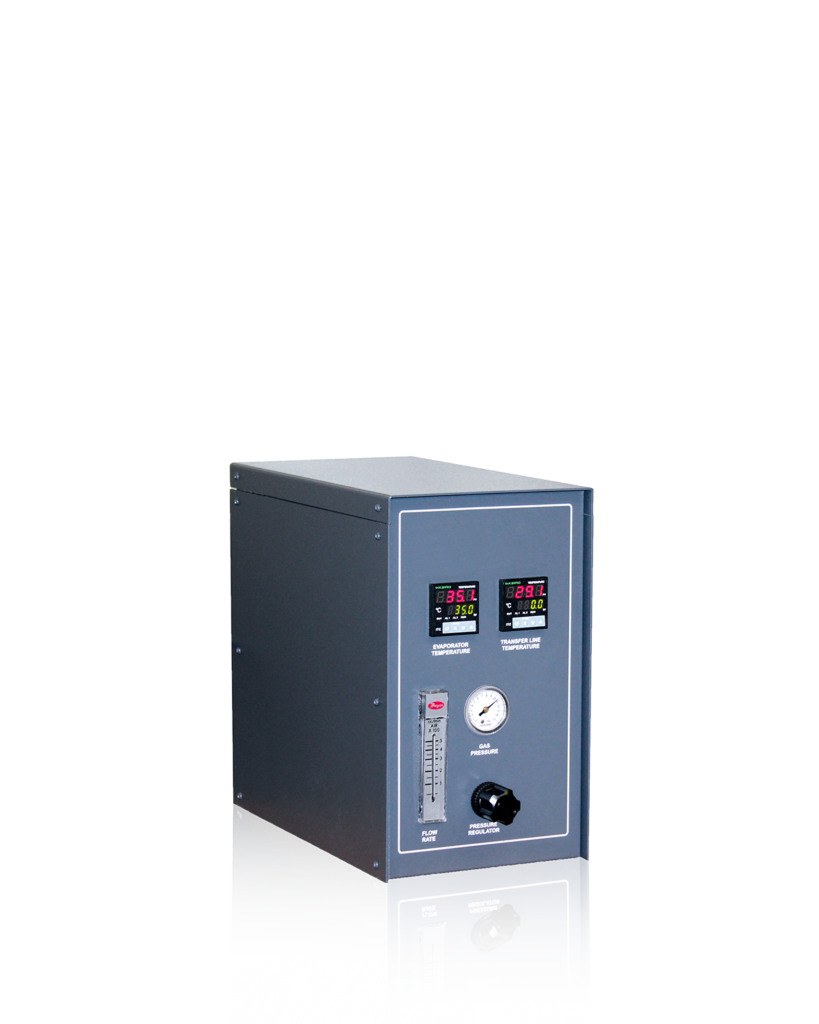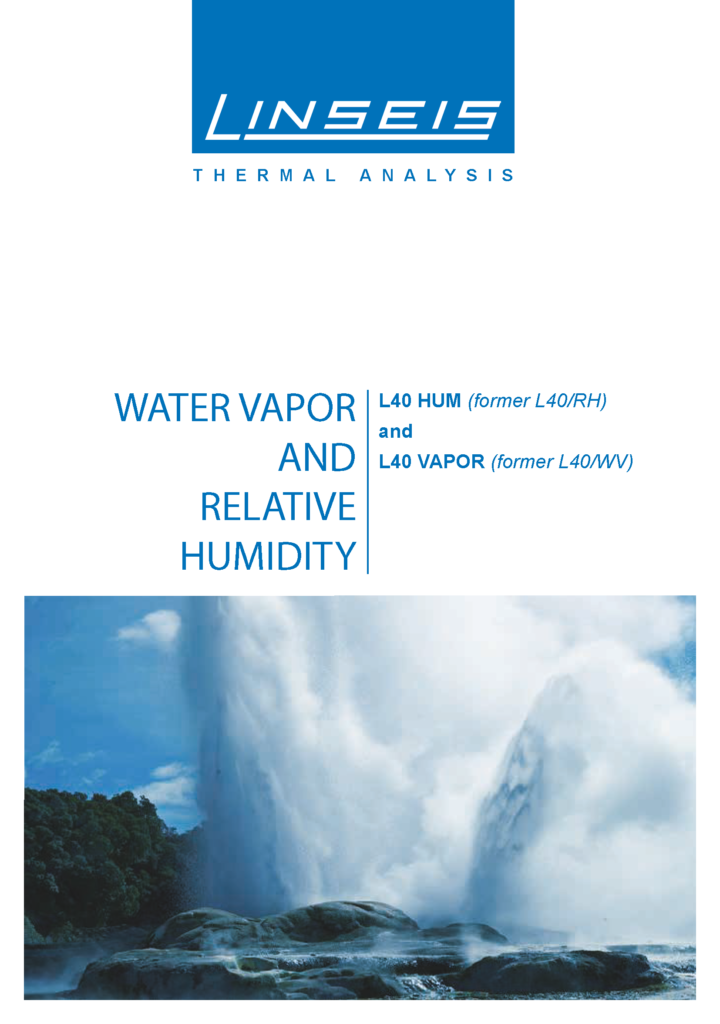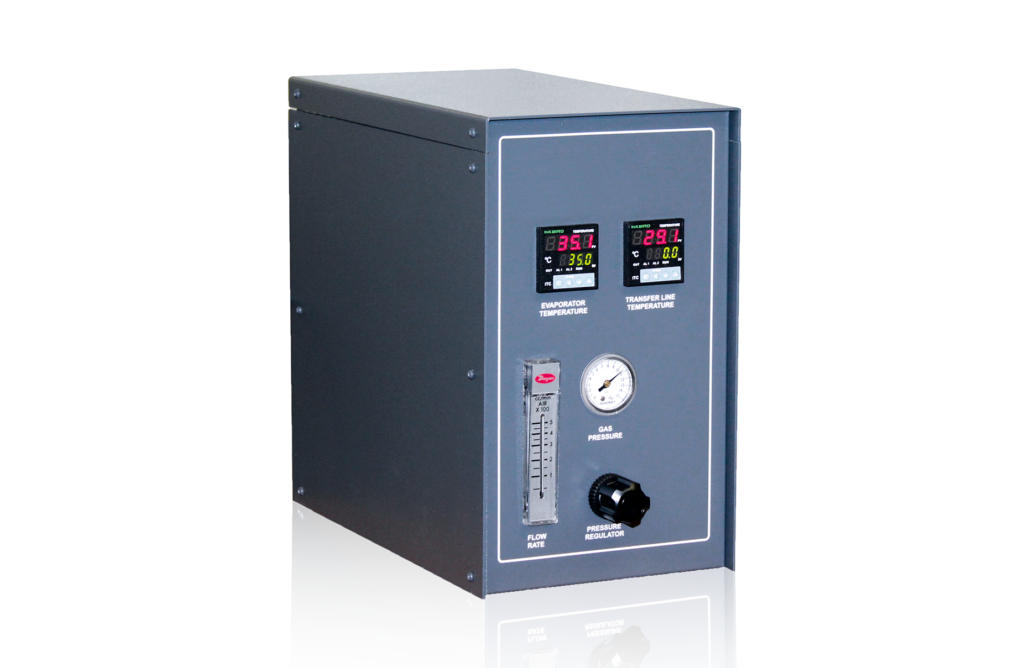Description
To the point
For many applications in thermal analysis, the atmosphere plays an important role as it may affect the sample behavior or initiate reactions. Humidity influence on building materials, storage time of pharmaceuticals and foods or influence on mechanical properties of polymers are just some of the most common examples.
Of course, the Linseis instruments are suitable for such experiments, however there is one fact that is often causing confusion and must be considered carefully: The difference between water vapor and relative humidty.
Difference between relative humidity and water vapor
Relative Humidity Generators are most commonly used for experiments around room temperature, while water vapor applications take place at higher temperatures.
When water is heated to its boiling point or higher than that, the water changes its aggregate form from liquid to gaseous. It is then existing as water vapor (steam). If this steam is introduced into any kind of reaction chamber or instrument, it is called water vapor application.
In contrast, every gas can transport and contain a certain amount of (liquid) water at any given temperature. This is called humidity. Considering air as an example, there is always an amount of water contained in the air, even below the boiling point of water, which is defined as grade of humidity or relative humidity.
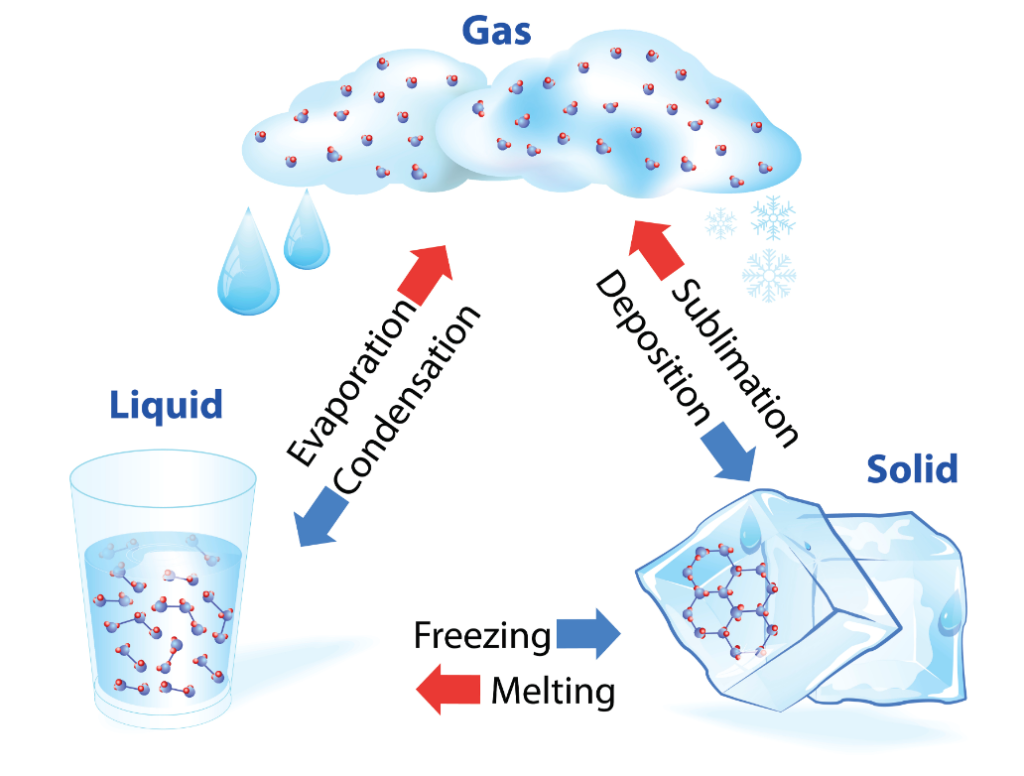
Humidity measurements
The typical temperature range for humidity generator is between room temperature and 80°C with a controllable relative humidity from 0.2% up to 98%. This can be used for applications in thermal analytical devices, like Dilatometers, Differential Scanning Calorimeters or Simultaneous Thermal Analyzers, especially for the analysis of food, pharmaceuticals, building materials or biological processes.
That means, the same amount of water, or more precisely, water vapor in the air (grams H2O per kilogram of air) translates into different relative humidity levels, depending on the temperature, as the capacity of the atmosphere changes. This maximum amount of water (capacity) is highly temperature dependent and varies from a fraction of grams per cubic meter (at temperatures below 0°C) to about 600 grams per cubic meter at 100 °C.
Relative humidity
The most commonly used measure of humidity is relative humidity. Relative humidity can be simply defined as the amount of water in the air relative to the saturation amount the air can hold at a given temperature multiplied by 100. Air with a relative humidity of 50% contains a half of the water vapor it could hold at a particular temperature.
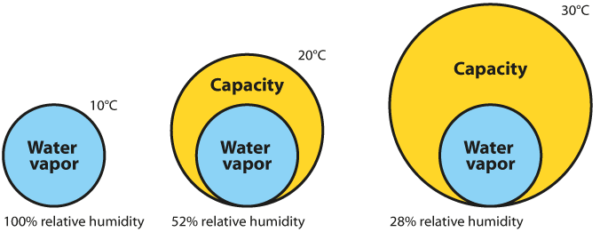
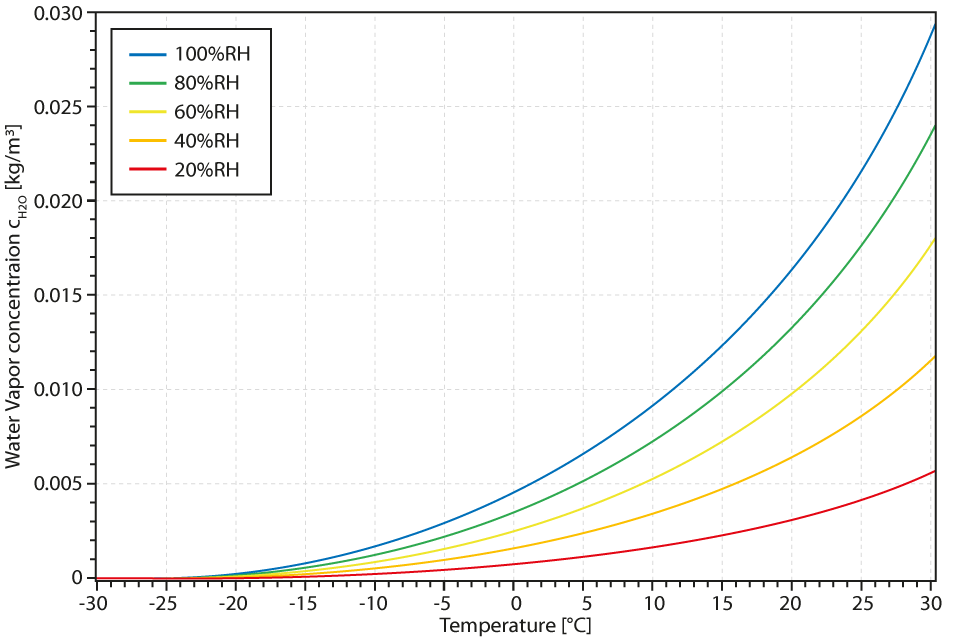
If the relative humidity is between 0.1% and 100%, the water can exist in the form of water vapor. If a relative humidity of 100% is reached and the ambient air is cooled down, the Dew Point (which defines the maximum amount of water, which the air can hold at a specified temperature) is exceeded and the water condenses from the air, in the form of liquid water.
The residual is an equilibrium between liquid water and water vapor at the specific temperature. On the other side, if the temperature is increased above the boiling point of water (100°C at sea level conditions), the water in the air can only exist in the form of water vapor.
In particular, with regard to the living conditions on earth, the indication of the relative humidity is very helpful, since the very narrow range of water vapor concentration in which a mammal, like humans, feels comfortable, can be graphically represented by the indication of the relative humidity.
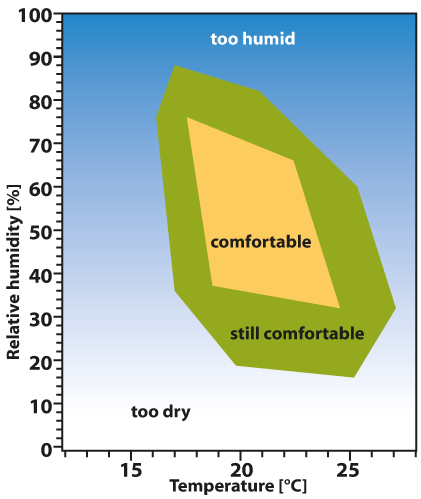
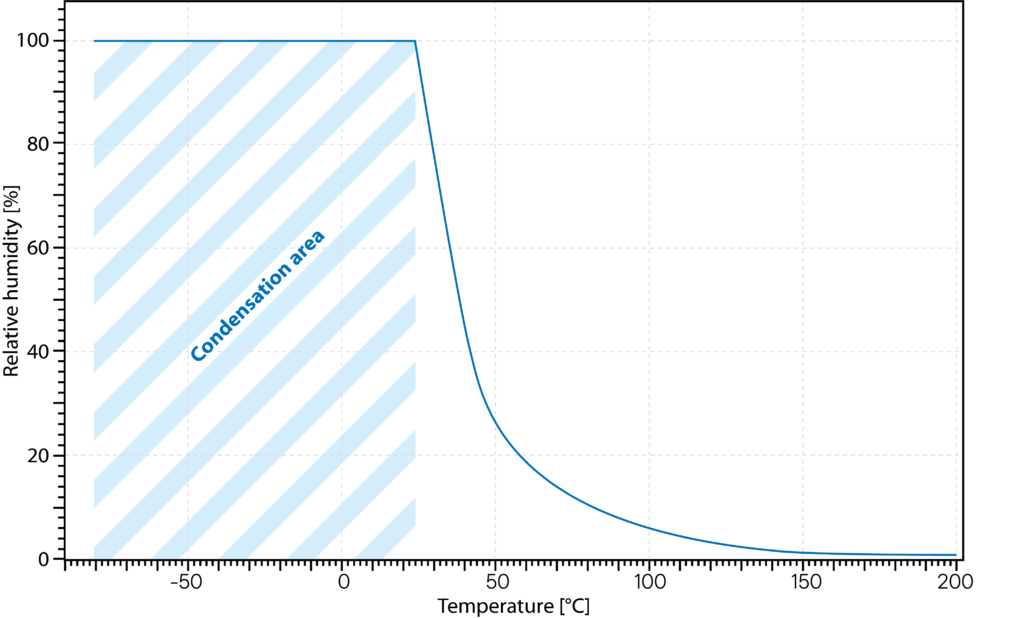
The other possibility is to measure under isothermal conditions, which allows to set defined and constant humidity levels between 0.2% and 98% relative humidity. Cold air below room temperature can only hold water vapor in a very limited amount that decreases with temperature. Air below 0°C can no longer contain water vapor.
(see graph above).
As soon as the relative humidity is above the dew point (e.g. during cooling down), the water vapor condenses to the form of moisture and, if the surrounding temperature is below 0°C, it will freeze. This procedure requires more extensive hardware equipment, e.g. a heated transfer line for sample temperatures above room temperature.
Questions? We're just a call away!
+1 (609) 223 2070
+49 (0) 9287/880 0
Our service is available Monday to
Thursday from 8-16 o’clock
and Friday from 8-12 o’clock.
We are here for you
Applications
A humidity generator creates an atmosphere containing water vapor by passing a gas through warm water and saturating it. The gas is then adjusted to a pre-set relative humidity of 100% RH by adding dry air using a dew point sensor. Customized configurations for carrier gas and compositions can be ordered, using additional MFCs or external dew point sensors.
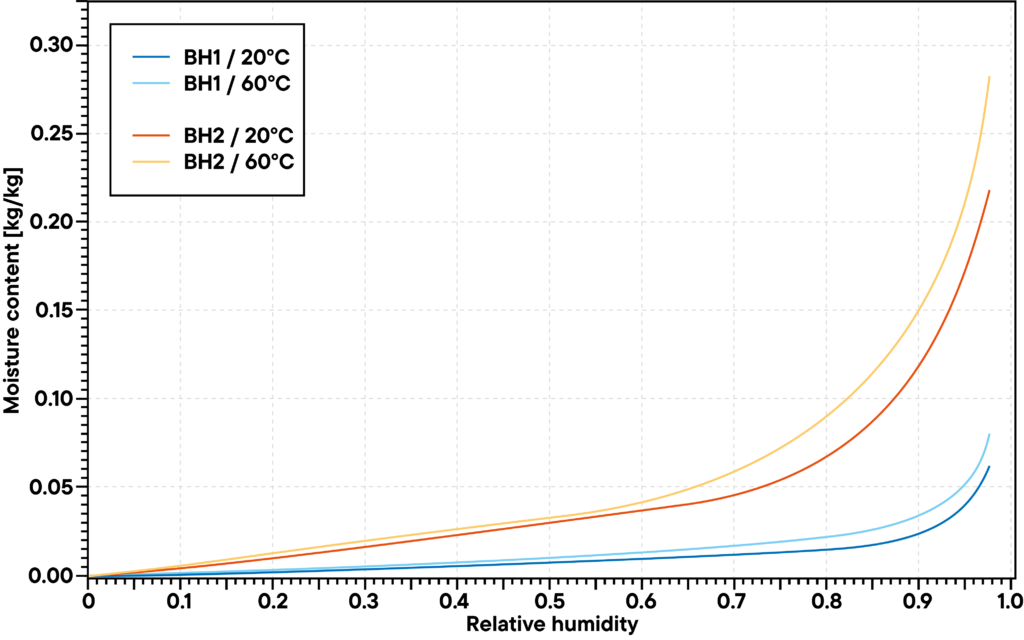
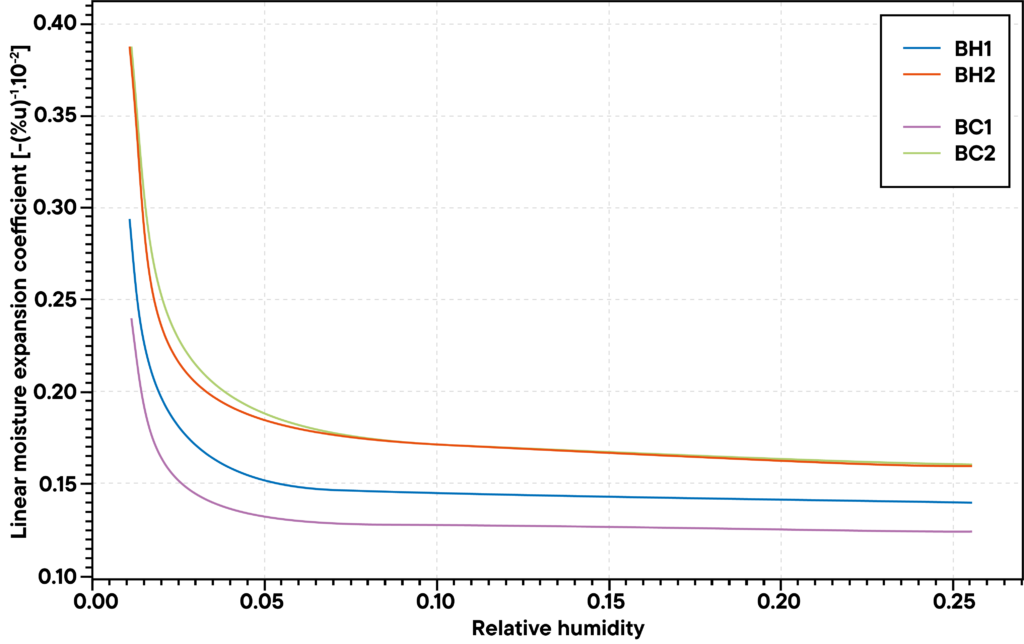
This application example shows the influence of moisture and humidity on brick material. The left curve shows the isotherms of 2 brick types at 20°C and 60°C and the moisture content, the samples adsorbed. On the right side you can see the moisture dependent coefficient of thermal expansion (CTE). The grade of humidity has a significant influence on the thermal expansion behavior.
P. sin; J. Lukovicova; G. Pavlendova; M. Kubliha; S. Uncik; Experimental Performance of HygroThermal Deformation
of Contemporary and Historical Ceramic Bricks, International Journal of Matter
Well informed
